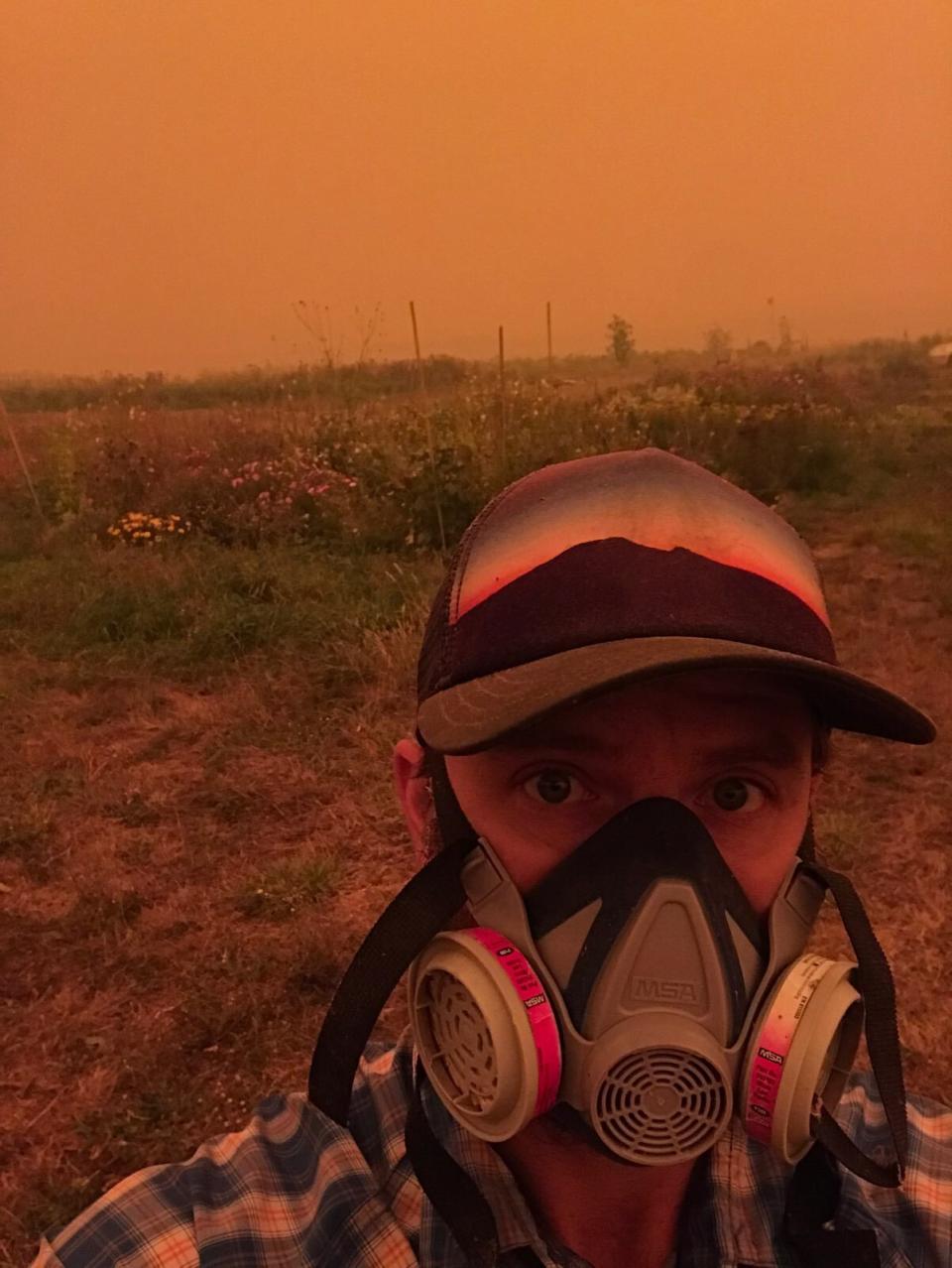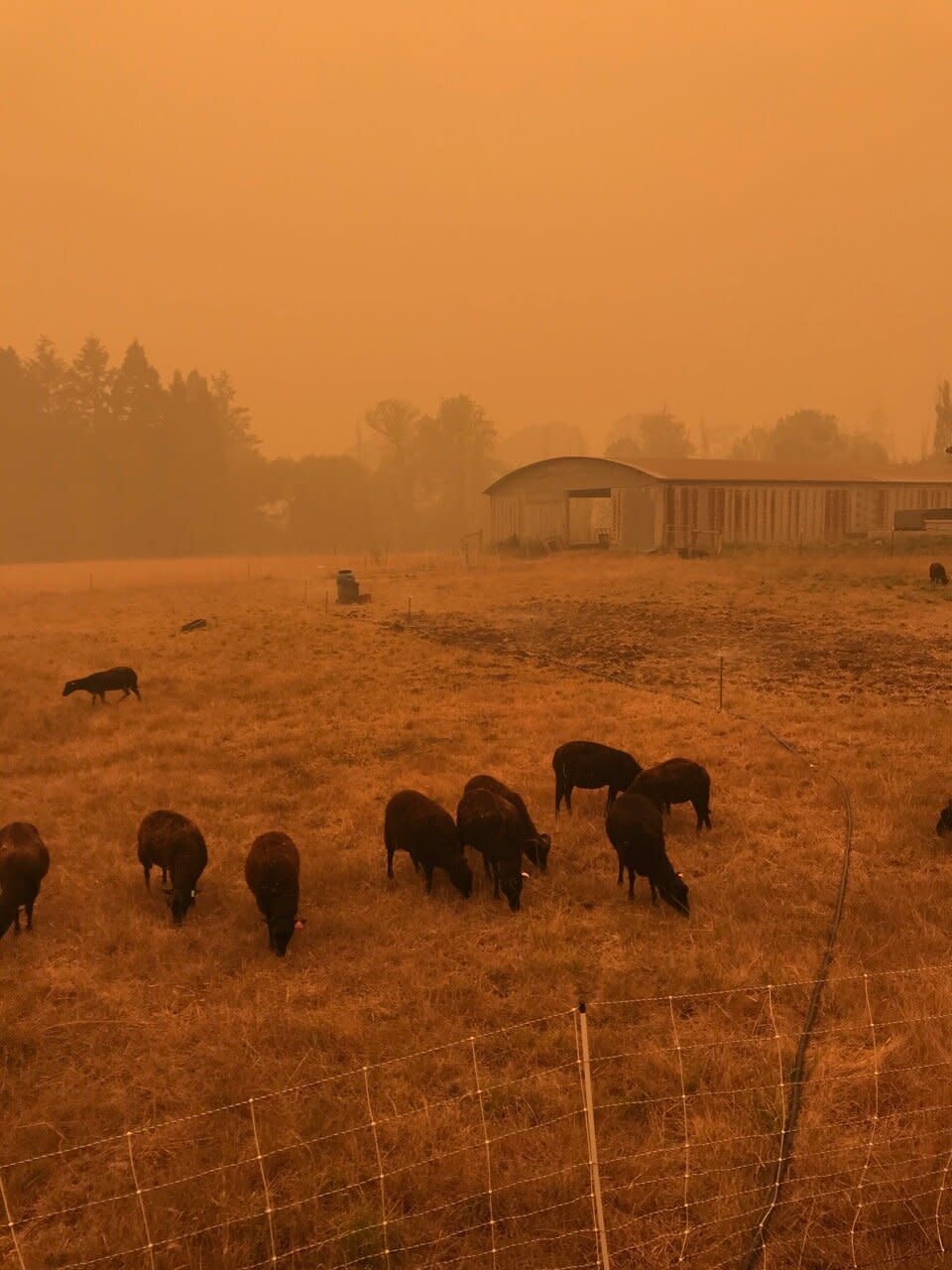How You Can Help Farmers Suffering From Wildfires Right Now
California, Oregon and Washington are all suffering from raging wildfires this year. Over 3 million acres have burned in 2020 in California alone, while it took just one week this month to decimate over a million acres in Oregon and more than 790,000 acres in Washington, leaving a trail of devastation and loss of life.
With the land ablaze around them, farms in the West Coast region have been struggling ― including in the agricultural powerhouse of California, which grows almost 50% of the fruits, nuts and vegetables that Americans consume.
We spoke to West Coast farmers to learn how they are dealing with the crisis and to find out what you can do to help these farmers, who produce the food we eat each day.

How farmers have been managing amid wildfires
Plenty of Americans have shifted where they do their job since the pandemic began, but farmers don’t have that luxury, whether they’re facing a virus or a wildfire.
“Farming continues even with COVID, smoke or whatever’s going on,” said Barb Iverson, who co-owns Woodburn, Oregon’s Iverson Family Farms and is president of the Oregon Farm Bureau. “The plants keep growing, the livestock still need to be fed. You have to get out and deal with what’s going on and make the best of it.”
Exactly how many farms have been harmed by the wildfires is unknown at this time.
“We’ve been trying to improve how we track impacted farms,” said Kelly Damewood, the CEO of California Certified Organic Farmers (CCOF), a nonprofit that advocates for organic agriculture and is a USDA-accredited organic certification agency. “Right now, we know of 21 that have been impacted. The majority of them have had to evacuate and/or have lost structures like water tanks, barns or even their homes.”
Even if a farm hasn’t been destroyed by fire, there can be significant consequences from the weeks of burning.
“The smoke and ash have been fairly oppressive,” Iverson said. “The only thing I can liken it to is when Mount St. Helens erupted in the ’80s ― we got ash fall from that. The ash has been pretty bad on a number of the crops.”
Crops covered in ash don’t necessarily all have to be discarded; ashy produce could be safe if washed properly. Smoke has been known to ruin wine grapes.
Smoky conditions can also make it difficult for farmworkers. “The air quality has been hard on employees,” Iverson said. “We’ve hovered around 500 on the [air quality] index, and 150 is the max [value] you want anyone out in. We haven’t had employees come out in the last week just because the air quality has been so poor.”

In Oregon’s Willamette Valley, Sarah Brown and her husband Conner Voss founded the 48-acre Diggin’ Roots Farm. Brown, who is also the director of education and advocacy at the organic farming nonprofit Oregon Tilth, and her children evacuated in the first week of September. Her husband remained at the farm.
According to Brown, he’s been quite busy, watering down their pasture to prevent the farm from catching on fire, moving a litter of newborn piglets and a sow to a safer area, and bringing in what Brown said was the largest harvest of the year. Diggin’ Roots has stayed safe thanks to community members and fellow farmers, who extinguished the Wilhoit fire, a small blaze that got to within a mile of the farm.
What you can do to help
Natural disasters may unfold on a scale that’s unfathomable, but there are concrete things you can do to help vulnerable farmers.
For those looking to aid organic farmers specifically, the CCOF said it’s giving away 100% of what it collects for its Bricmond Hardship Assistance Fund. “Our fund to help farmers through the tough times has received record applications ― about four times what we normally see,” Damewood said. (If you give through the website, send an email to foundation@ccof.org to note that your donation is for the fund specifically.)
An individual GoFundMe account has been set up for the Molino Creek Farming Collective in the Santa Cruz Mountains, which Brown said was hit hard.
If you live in an affected area and want to help out locally, joining a local farm’s CSA or buying produce from a farmers market is always a good option. Even if a local farm has closed up its community-supported agriculture program for the season, you can still offer support.
“Consider preordering!” Damewood said. “See if a farmer in your area is taking orders now for next year. Winegrowers have been impacted, as the Sonoma region continually gets hit. Can you join a wine club and provide a revenue source for them? Try to shop regionally and locally to help the smaller farmers operating on smaller margins.”
And while slowing down the climate change that makes wildfires more frequent and deadly isn’t quite as easy as opening your wallet for a farmer, there is no better time to get active on that front.
“The science is clear that increased weather extremes and weather events are directly related to climate change,” Brown said. “I read that these fires are hotter and dryer, which is why we’re seeing these extremes.”
Damewood noted that the choices you make at the dinner table can support American farmers and mitigate climate change.
“Our food system deeply impacts every part of our environment, from air and water quality to the types of chemicals that are used and put into the [world],” she said. “American families should understand that buying organic supports a better climate agenda.”
Related...
West Coast Wildfires Spark Headaches and Hospital Visits
Firefighting Resources Run Thin As West Coast Wildfires Continue
Fire, Flood, Smoke, Cyclones: The Climate Crisis Is Everywhere
Love HuffPost? Become a founding member of HuffPost Plus today.
This article originally appeared on HuffPost and has been updated.

